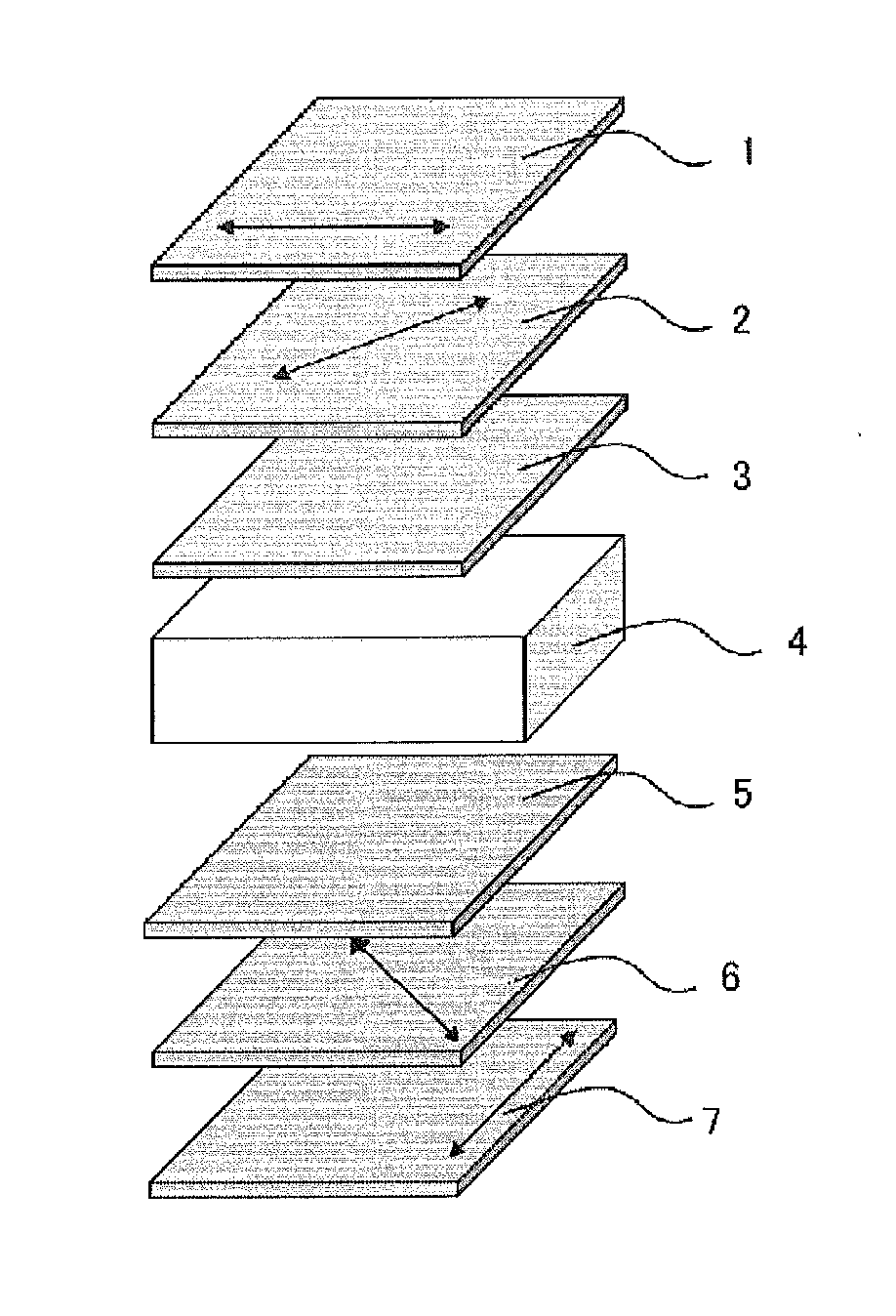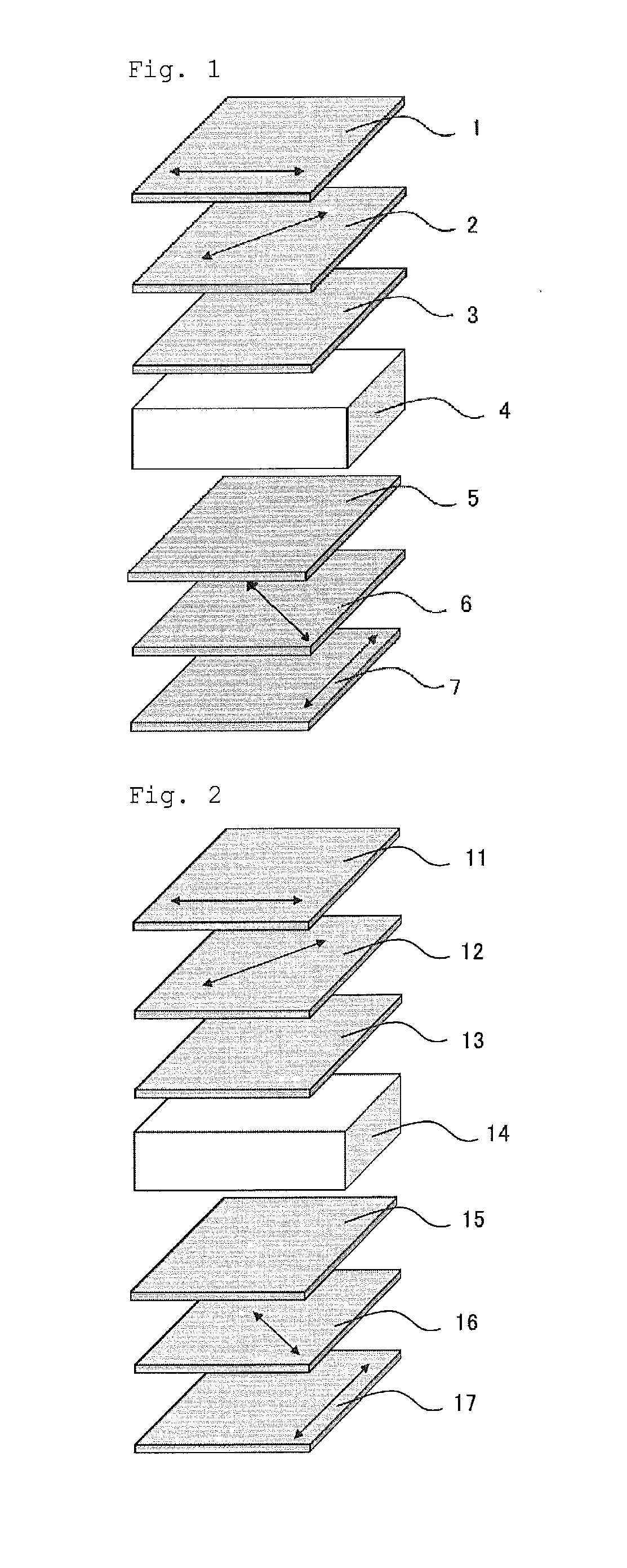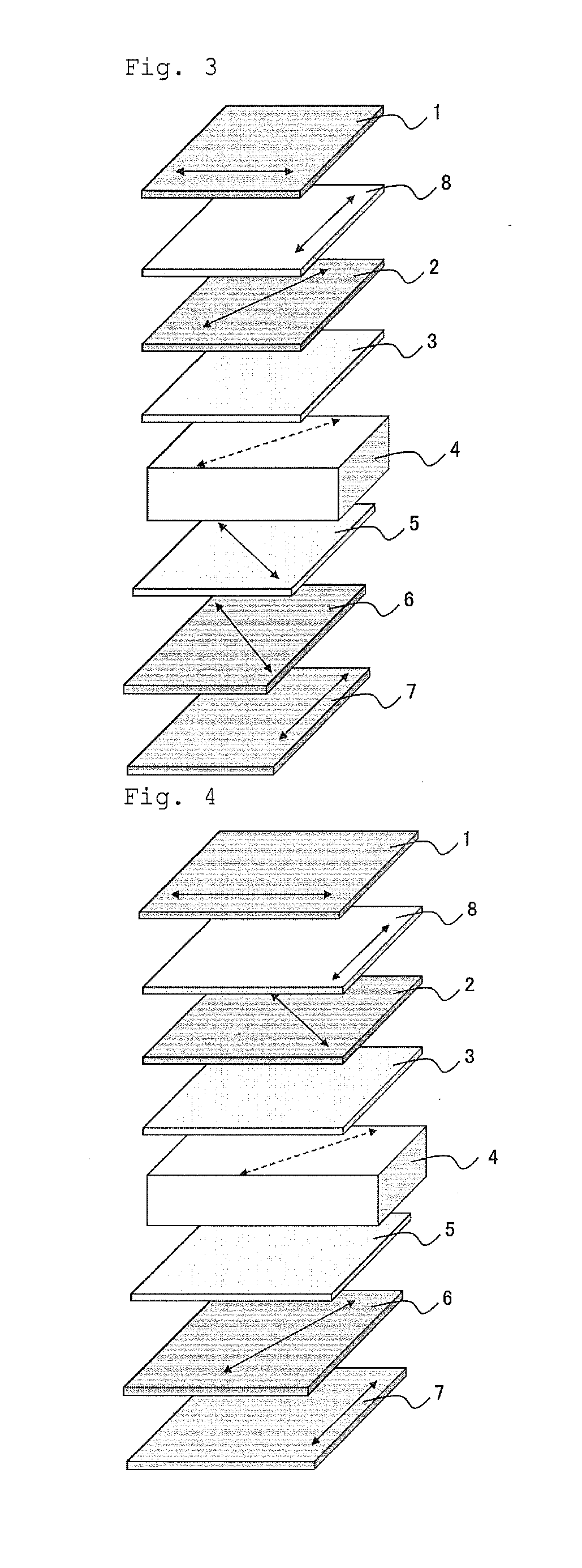Liquid crystal display device
a liquid crystal display and display device technology, applied in non-linear optics, instruments, optics, etc., can solve the problems of reducing the use efficiency of backlight, unsuitable for higher definition, and complicated pixels of eight-domain displays, so as to achieve less whitening and tinting
- Summary
- Abstract
- Description
- Claims
- Application Information
AI Technical Summary
Benefits of technology
Problems solved by technology
Method used
Image
Examples
first embodiment
[0065]FIG. 3 illustrates an example structure of a liquid crystal display device according to the first embodiment of the invention. The device includes a first polarizing film, a first retardation layer, a second retardation layer, a liquid crystal layer, a third retardation layer, a fourth retardation layer, and a second polarizing film, in sequence. The liquid crystal layer has four domains or less, and is in a vertical alignment mode (VA mode) under no voltage application. The first and fourth retardation layers each have an in-plane retardation Re (550) of 25 to 125 nm at a wavelength of 550 nm, and have a thickness retardation Rth (550) of 12.5 to 62.5 nm at a wavelength of 550 nm. The absolute value of the retardation Re (550) of the second retardation layer is 10 nm or smaller, while the retardation Rth (550) of the second retardation layer is −200 to −100 nm. The absolute value of the retardation Re (550) of the third retardation layer is 10 nm or smaller, while the retarda...
second embodiment
[0103]FIG. 4 illustrates an example structure of a liquid crystal display device according to the second embodiment of the invention. The device includes a first polarizing film, a first retardation layer, a second retardation layer, a liquid crystal layer, a third retardation layer, a fourth retardation layer, and a second polarizing film, in sequence. The liquid crystal layer has four domains or less, and is in a vertical alignment mode (VA mode) under no voltage application. The first and fourth retardation layers each have an in-plane retardation Re (550) of 25 to 125 nm at a wavelength of 550 nm, and have a thickness retardation Rth (550) of 12.5 to 62.5 nm at a wavelength of 550 nm. The absolute value of the retardation Re (550) of the second retardation layer is 10 nm or less, while the retardation Rth (550) of the second retardation layer is −300 to −200 nm. The absolute value of the retardation Re (550) of the third retardation layer is 10 nm or less, while the retardation ...
third embodiment
[0125]FIG. 3 illustrates an example structure of a liquid crystal display device according to the third embodiment of the invention. The device includes a first polarizing film, a first retardation layer, a second retardation layer, a liquid crystal layer, a third retardation layer, a fourth retardation layer, and a second polarizing film, in sequence. The liquid crystal layer has four domains or less, and is in a vertical alignment mode (VA mode) under no voltage application. The first and fourth retardation layers each have an in-plane retardation Re (550) of 25 to 125 nm at a wavelength of 550 nm, and have a thickness retardation Rth (550) of −62.5 to −12.5 nm at a wavelength of 550 nm. The absolute value of the retardation Re (550) of the second retardation layer is 10 nm or less, while the retardation Rth (550) of the second retardation layer is −150 to −50 nm. The absolute value of the retardation Re (550) of the third retardation layer is 10 nm or less, while the retardation ...
PUM
| Property | Measurement | Unit |
|---|---|---|
| thickness retardation Rth ( | aaaaa | aaaaa |
| thickness retardation Rth ( | aaaaa | aaaaa |
| thickness retardation Rth ( | aaaaa | aaaaa |
Abstract
Description
Claims
Application Information
 Login to View More
Login to View More - R&D
- Intellectual Property
- Life Sciences
- Materials
- Tech Scout
- Unparalleled Data Quality
- Higher Quality Content
- 60% Fewer Hallucinations
Browse by: Latest US Patents, China's latest patents, Technical Efficacy Thesaurus, Application Domain, Technology Topic, Popular Technical Reports.
© 2025 PatSnap. All rights reserved.Legal|Privacy policy|Modern Slavery Act Transparency Statement|Sitemap|About US| Contact US: help@patsnap.com



